How did the trajectory of Soviet diplomacy change from supporting Hungarian territorial claims to Transylvania to retroactively adhering to the Trianon decision? Why did the settling of the Transylvanian border cause conflict among the major powers when dealing with the issue in the fall of 1945? And how did the American, British, and French foreign ministers arrive at their decision to adjust the Hungarian-Romanian border in Hungary’s favor? A preliminary answer to these questions and a brief reconstruction of the events can be compiled by sourcing the specialist literature and memoirs published so far.
Nevertheless, rereading and critically analyzing the Soviet sources that have become available over the past twenty years, placing them in their original contexts, and comparing them with previously published Hungarian, British, American, and French diplomatic documents can enrich and clarify the previously known picture with new nuances. This article will make such an attempt by reinterpreting the telegrams of József Kristóffy, the Hungarian ambassador to Moscow, reconsidering the text of the Romanian Armistice Agreement, and revisiting the debate over Transylvania at the Council of Foreign Ministers in London.
The Romanian armistice, signed in Moscow on September 12, 1944, rendered the Second Vienna Award – which had returned a large section of Transylvania to Hungary – null and void, while also leaving the future Hungarian-Romanian border unresolved. Article 19 of the agreement was the result of a Soviet-British-American compromise and stipulated that Transylvania (or the greater part thereof) should be returned to Romania contingent upon confirmation of a peace settlement. In the fall of 1945, the Transylvanian question led to a dispute between the victorious powers of World War II that brought the entire peace settlement to a standstill. At various times and for different motives, the various allied powers contemplated border changes in Hungary’s favor vis-à-vis Romania, which was in a similar political situation. In the initial stages of the war, in 1940–41, Soviet diplomacy supported Hungarian territorial claims on Transylvania, and even as late as 1945, both the American and British (and even the French) foreign ministers raised the possibility of border adjustments at the Council of Foreign Ministers in London on September 20, as they did not consider the Hungarian-Romanian border established by the Treaty of Trianon to be “ideal,” “fair,” “equitable,” or “reasonable.”
The Kristóffy telegrams in an international context
István Kertész, head of the Peace Preparation Department of the Hungarian Ministry of Foreign Affairs, proceeded in the summer of 1945 on the assumption that “Romania’s conflicts with Russia are rooted in Realpolitik considerations,” and the Hungarian-Romanian border issue would be decided by the Soviet Union.
“There is no doubt that the armistice agreement with Romania offers some hope for the return of at least part of Northern Transylvania. What, when, and in what form we should put forward our claims in taking advantage of this opportunity is a matter of political expediency and will depend to a significant degree on the relationship of the two states to Russia and to each other at the given moment.”
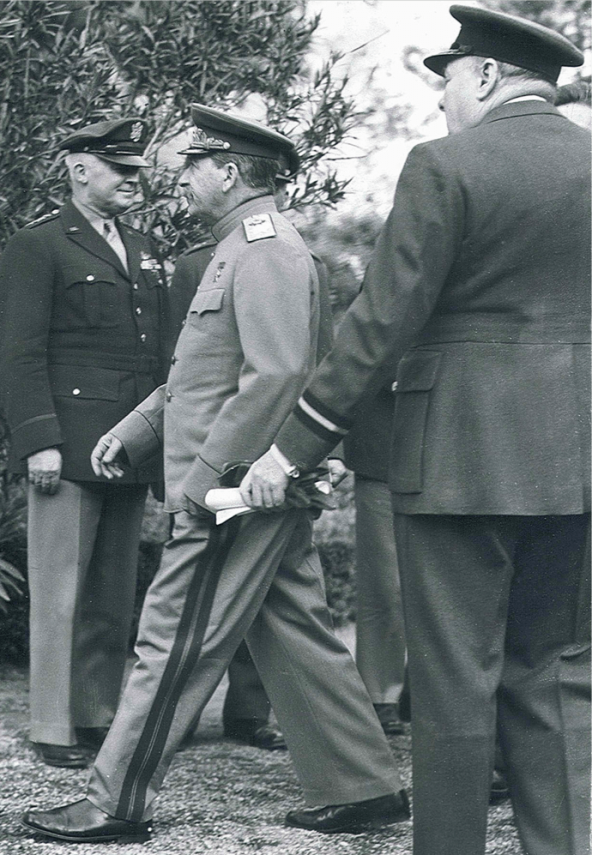
Turning point in Tehran: Stalin strides forward triumphantly, having convinced President Roosevelt to open a second front in Normandy and abandon Churchill’s (back to the camera) Mediterranean and Balkan plans. On December 5, 1943, Roosevelt appointed General Eisenhower commander-in-chief of the Allied landing forces
Kertész, having recourse to the telegrams sent to Budapest by the Hungarian ambassador in Moscow, József Kristóffy, prior to the Second Vienna Award of 1940, attempted to reconstruct how far the Soviets were willing to go in supporting Hungarian demands at the beginning of the war. Kristóffy wrote his coded telegrams after the signing of the Molotov-Ribbentrop Pact, when the Soviet Union was reclaiming former territories of the Tsarist Empire one after another, including Eastern Poland, Finnish Karelia after the Winter War, and the Baltic States – Estonia, Latvia, and Lithuania – after the French surrender. Article 3 of the Secret Protocol to the Soviet-German Non-Aggression Pact concerned Romania: “With regard to southeastern Europe, the Soviet side draws attention to its interest in Bessarabia; the German side declares its complete political disinterestedness in these areas.”
In Soviet foreign policy, the fate of Transylvania was bound up with the issue of Bessarabia from the very beginning of the war.
In the summer of 1940, all three neighbors of “Greater Romania” – the Soviet Union, Hungary, and Bulgaria – wanted to revise the Romanian borders established under the Versailles peace structure. The Soviet ultimatum of June 6, 1940, demanding the surrender of Bessarabia and Northern Bukovina within 24 hours, paved the way for the assertion of Hungarian and Bulgarian territorial claims against Romania. The German government recognized the Soviet claim to Bessarabia as legitimate, and although it objected to the annexation of “the whole of Bukovina” because this had not been included in the earlier agreement, it persuaded the Romanian government to accept the Soviet ultimatum within 24 hours. The German action was also supported by the Italian government and Romania's Balkan allies.

The Red Army occupied the “ceded territories” within a few days: In addition to the former Tsarist province of Bessarabia and the northern part of the former Austrian crown province of North Bukovina, the Red Army also occupied the territory of Old Romania’s Hertsa region and the islands of the Danube Delta. However, due to German reservations, the Soviets temporarily refrained from occupying the southern part of Bukovina. Churchill expressed no objections to the annexation of Bessarabia from Romania, which had terminated Britain’s 1939 guarantee of Romania’s independence on July 1, 1940, although the British prime minister attributed this to a manifestation of “new Soviet imperialism” rather than “a return to the imperialism of the Tsars.” What is more, Churchill sent a message to Stalin through the British ambassador in Moscow, Stafford Cripps, suggesting that the Soviet Union should take the lead in the Balkans.
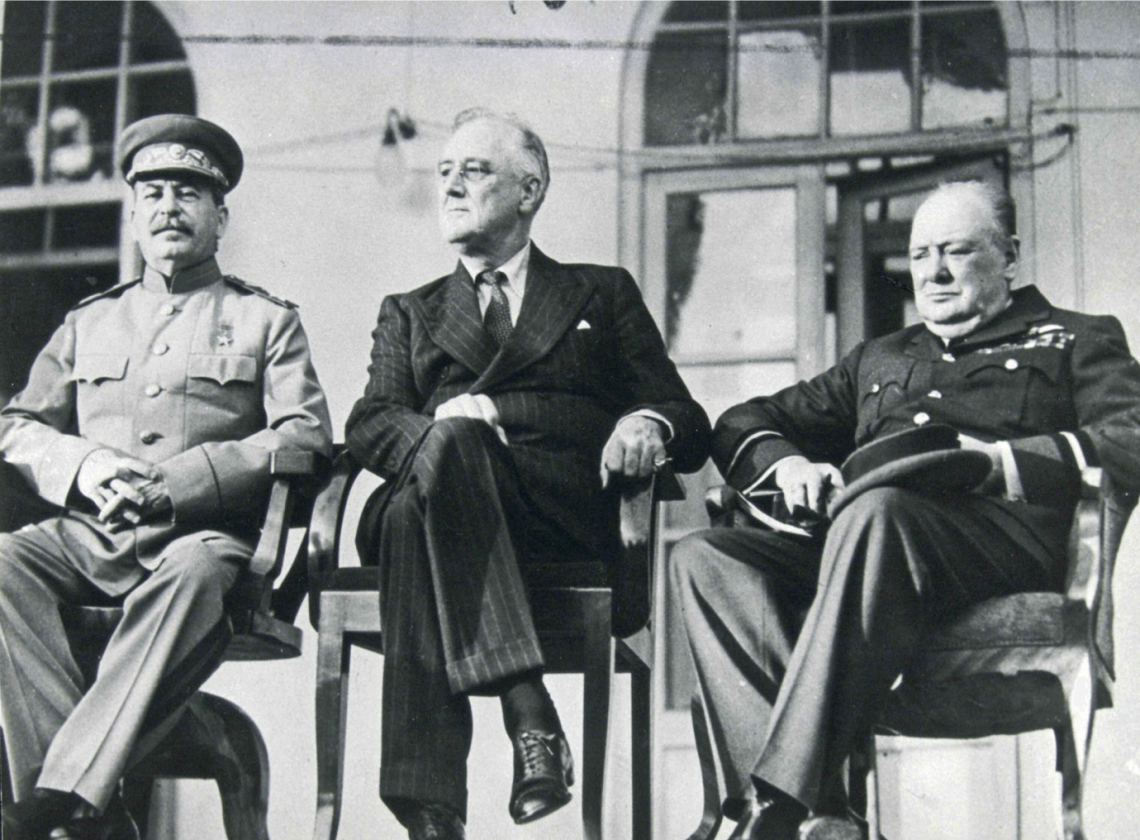
The masters of the world: Soviet-American collusion and the sad British “donkey.” Stalin, Roosevelt, and Churchill on the terrace of the Soviet embassy in Tehran
Romania’s unexpected capitulation to the Soviet ultimatum ruled out the possibility of Greater Romania’s neighbors enforcing their claims through joint military action. Pál Teleki, Hungarian Prime Minister (r. 1939–1941), for instance, was interested in neither military nor political cooperation with the Soviet Union against Romania. In the days leading up to Bessarabia’s annexation, Soviet foreign minister Molotov offered no encouragement in support of Hungarian and Bulgarian territorial claims. His only concession to Hungary was to declare that he did not consider the “question of Russian Transcarpathia” to be “relevant.”
Still, Teleki did not want to let slip the opportunity provided by the Soviet precedent; thus, the Hungarian government mobilized its military to give added weight to its claims. And on June 29, 1940, Kristóffy asked the Deputy People's Commissar for Foreign Affairs Vladimir Dekanozov in Moscow how his government would react if Hungary made similar territorial demands against Romania as those already put forward by the Soviet Union. Kristóffy stated that Hungary wished to resolve the issue peacefully at a conference. Molotov responded to the Hungarian government’s inquiry on July 4, reiterating his earlier statements made to the Italian ambassador:
“The Soviet Union has no territorial claims against Hungary, seeks to establish good relations with it, and considers Hungarian territorial claims to be well-founded […] The Hungarian government can count on the Soviet government to legally support Hungarian territorial claims at a possible peace conference.”
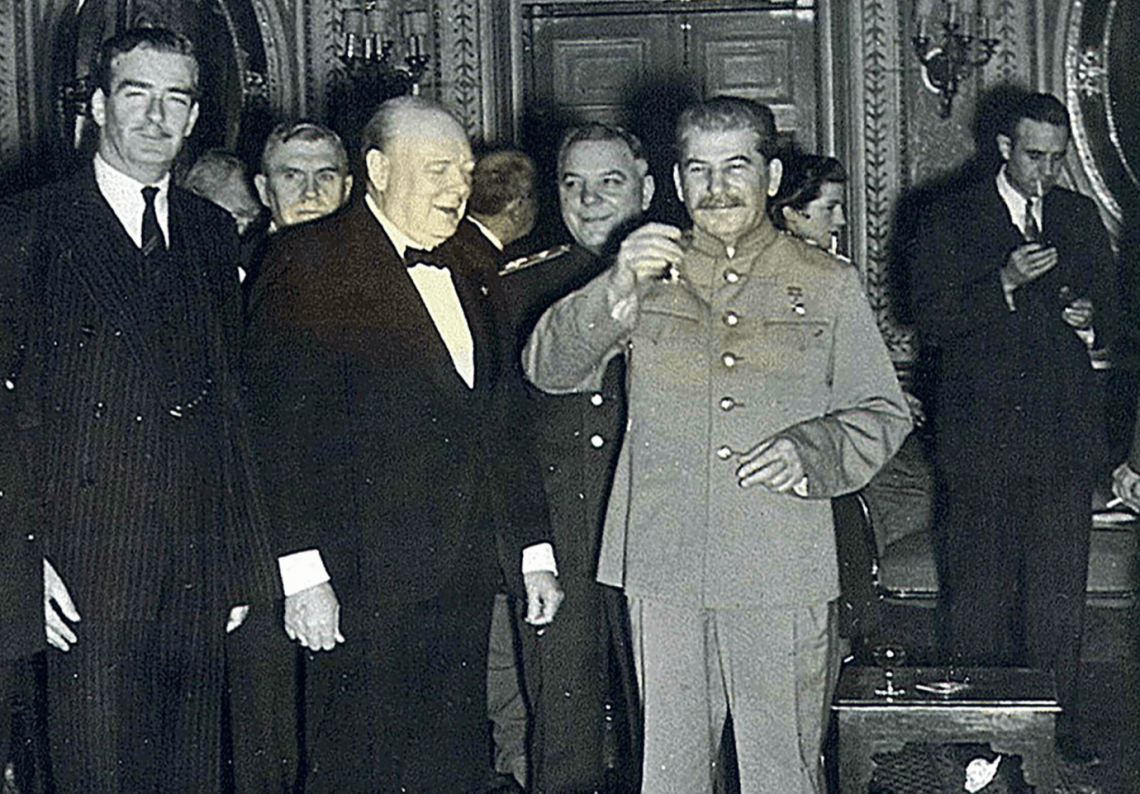
The Russian-language comment on Molotov’s statement is more cautious: it stated that the Soviet delegates considered the Hungarian demands to be well-founded “and would maintain the same position in the event of a possible international conference where the question of Hungary’s claims against Romania would eventually be raised.” In response to a further question from the Hungarian ambassador in Moscow, the Soviet People’s Commissar for Foreign Affairs stated that this position would also apply in the event of armed conflict between Hungary and Romania.
After the fall of France in June 1940 and Romania’s termination of the aforementioned British guarantee of Romanian independence, the Soviet government expressed an interest in participating in the German-Italian territorial reorganization of Southeast Europe and thus supported Hungarian and Bulgarian territorial claims against Romania. On August 24, 1940, following the breakdown in Hungarian-Romanian negotiations in Turnu Severin, Kristóffy reported that Molotov had confirmed that “our demands are considered well-founded” and that “the Soviets’ conduct during the events will be favorable to Hungary.” Moreover, he added that “the Hungarian government should be assured that [the Soviet Union] never considered the Romania of Versailles and Trianon to be ideal, and that it was equally harmful to Russia, Bulgaria, and Hungary.”
The Soviet government apparently expected Hungarian Prime Minister Pál Teleki to launch an independent military operation “in the course of events,” which would have provided an opportunity to crush Romania by military force just as they had crushed Poland – that “monster of the Versailles peace system” – at the beginning of World War II and thus extend Soviet influence to Bulgaria, Romania, and Hungary. The Red Army marched to the Soviet-Romanian border, where skirmishes took place at the end of August 1940. Nevertheless, if the Hungarian-Romanian conflict were to be resolved peacefully at an “international conference,” the Soviet Union insisted on being included among the arbitrators.
In terms of supporting “Hungarian territorial claims,” the Soviet position seemed much more favorable than that of the Germans or Italians. The Soviet threat was duly felt in Bucharest as the Romanian government hastily sought German protection and requested German-Italian arbitration to resolve the territorial dispute. Hitler thwarted Stalin’s plans with the sudden decision to convene a German-Italian court of arbitration in Vienna, which divided Transylvania in two on August 30, 1940. Hitler, in effect, settled not only the Hungarian-Romanian border dispute but the Bulgarian-Romanian dispute as well, resolving both peacefully and without the involvement of the Soviet Union. All three states (Hungary, Romania, and Bulgaria) thus fell under German rather than Soviet domination. Thus, German and Soviet expansionist ambitions first clashed in the Balkan Peninsula.
In tandem with the territorial settlement, Germany also guaranteed Romania’s borders, which was aimed at preventing any further Soviet (Southern Bukovina) or Hungarian (Southern Transylvania) land claims. On August 31, 1940, Molotov reproached the German ambassador in Moscow, Count Schulenburg, for Germany having violated its obligation to consult with the Soviet Union under the terms of the non-aggression pact signed on August 23, 1939. He also complained about the Soviet Union’s exclusion from the decision regarding the Second Vienna Award, which granted Hungary Northern Transylvania, and that the territorial guarantees conferred on Romania were directed against the USSR. The entry of German training units to the Romanian oil fields in the first week of October 1940 put an end to both the Soviet-German agreement on spheres of interest and the validity of the Molotov-Ribbentrop Pact; nevertheless, the Soviets did not question the Vienna arbitration decision.
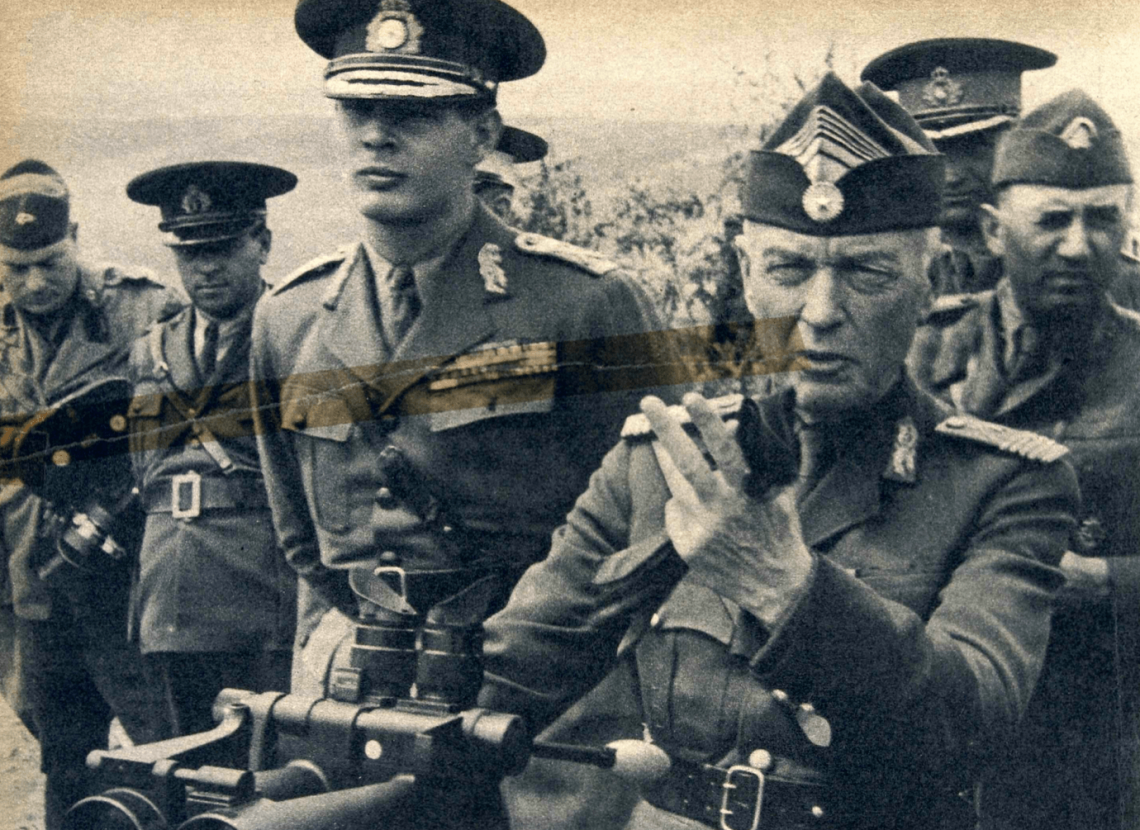
In commenting on the Vienna Award when addressing the House of Commons on September 5, 1940, Churchill stated, “I have never been happy about the way in which Hungary was treated after the last war. We have not at any time adopted, since this war broke out, the line that nothing could be changed in the territorial structure of various countries. On the other hand, we do not propose to recognize any territorial changes which take place during the war, unless they take place with the free consent and good will of the parties concerned.”
The British government did not consider the Second Vienna Award as a territorial change resulting from the free will of the parties concerned, although it did recognize the Romanian-Bulgarian Treaty of Craiova, which saw Bulgaria annex Southern Dobruja, as such.
Kristóffy’s last – and most frequently cited telegram – also takes on new meaning when compared to the Soviet memo written on the subject. On the morning of June 23, 1941, the day after the start of the German invasion of the USSR, Molotov queried Ambassador József Kristóffy about Hungary’s position on the German-Soviet conflict, asking whether Hungary intended to take part in the war on “one side or another” or would adopt a neutral stance. Molotov, according to the ambassador’s telegram, had declared that “the Soviet government, as has been stated on several occasions, has no claims or aggressive intentions against Hungary, is not opposed to Hungarian claims being realized at the expense of Romania, and will have no objections in this regard in the future.”
The notes of Boris Podtserob, a Soviet diplomat who participated in the conversation, differ from the Hungarian ambassador’s telegram in two important respects. On the one hand, Molotov does not state that the Soviet government has no “aggressive intentions against Hungary,” but rather says the Soviet Union has no disputes with Hungary. On the other hand, Molotov states that “the Soviet Union has no objections regarding the enlargement of Hungary’s territory at the expense of Romania.” Podtserob’s account expresses Molotov’s intentions more accurately than Kristóffy's telegram to Budapest: He wanted to keep Hungary out of the war, so – at the last moment – he de facto recognized the territorial validity of the Second Vienna Award concerning Northern Transylvania, but he made no promises for the future, nor did he suggest the absence of aggressive intentions toward Hungary.
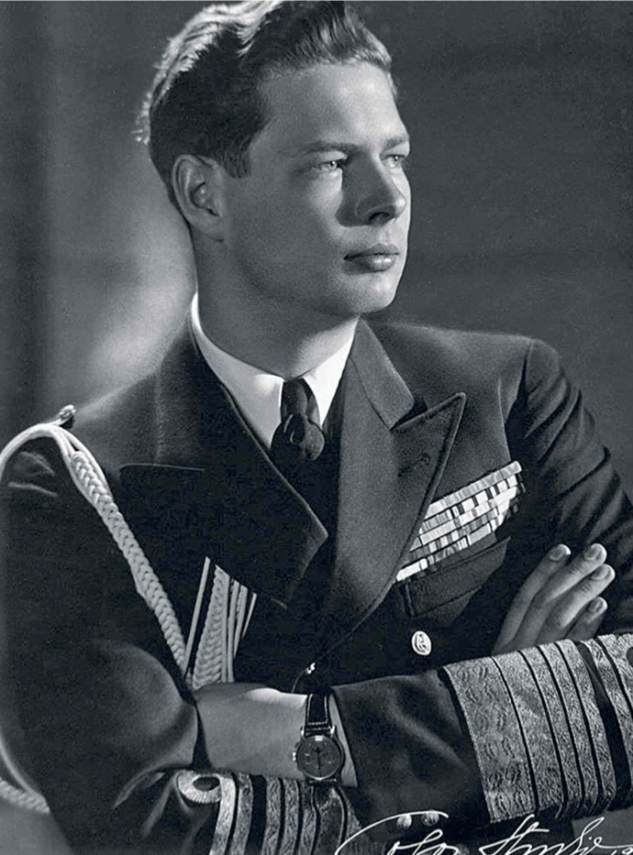
Romania and Finland had both launched attacks upon the Soviet Union at the same time as the Germans in order to regain “lost territories.” On June 24, Molotov asked Grigore Gafencu, the Romanian ambassador in Moscow, about the reasons for Romania’s participation in the German war of aggression because according to him – Molotov – the Soviet Union had sought good neighborly relations with Romania and had “made no territorial claims against Romania” after “the settlement of the Bessarabian question.” Those good relations had been damaged, however, by the German territorial guarantee, as a result of which “Romania became dependent upon Germany, submitting to the will of German national socialists,” and because the Soviet government interpreted the entry of German training units into Romania as German occupation. Gafencu justified Romania’s entry into the war by saying that the Soviet Union had forcibly annexed Bessarabia, in addition to Bukovina, the Old Romanian region of Hertsa, and the islands of the Danube Delta, only after which did they seek (German) guarantees against “gigantic Russia” in order to ensure “the survival of the nation.” Molotov avoided discussing the annexation of Bessarabia and concluded the conversation by saying, “The question now no longer concerns this or that part of Romanian territory but the existence of Romania itself as a state.”
Kristóffy’s telegram did not change the course of events; Soviet efforts to maintain Hungarian neutrality were fruitless. On June 26, 1941, following a Soviet air raid on Kassa (Košice), Hungary’s head of state, Admiral Horthy, decided to enter the war against the Soviet Union. Three years later, when the Transylvanian question was put on the agenda in Moscow, on June 5, 1944, the deputy people’s commissar for foreign affairs, Maxim Litvinov, wrote the following about Hungary’s declaration of war:
"Hungary – without the slightest provocation – immediately sided with Germany after it attacked the Soviet Union. Hungary didn’t even have the kind of grievances against the USSR that Finland and Romania used to justify their participation in the war. In proportion to its total armed forces, Hungary probably provided greater military support to Germany than even Italy. To reward it for all this by satisfying its main territorial ambitions would be inappropriate."
Transylvania or the greater part thereof
On December 16, 1941, Stalin presented his peace plans to the British foreign secretary, Anthony Eden, who was visiting Moscow. The Soviet head of government was preparing an anti-Hitler version of the Molotov-Ribbentrop Pact, a sort of “Molotov-Eden Pact,” which would restore the Soviet Union’s 1941 borders – as they existed before the German attack; this meant the 1919 Curzon Line with respect to Poland, the border drawn according to the Soviet-Finnish peace treaty, and the Soviet incorporation of the Baltic States, Bessarabia, and Northern Bukovina. Stalin also addressed the Romanian issue in his draft of the secret protocol dividing Europe into British and Soviet spheres of influence. According to this, the Soviet Union planned to conclude a military alliance with Romania, which would permit the USSR to establish land, air, and naval bases on Romanian territory. “The territory of Romania itself should be somewhat enlarged towards the west at the expense of Hungary, where up to 1.5 million Romanians currently live,” said Stalin, targeting the territory of Northern Transylvania given to Hungary in the Second Vienna Award. “This would also serve as an additional punishment for Hungary for its role in the war.”
On June 7, 1943, during the negotiations on the Allied response to Hungary’s peace overtures, Molotov informed Washington and London that “the Soviet government does not consider the so-called arbitration award made in Vienna on August 30, 1940 at the behest of the German dictatorship which granted Northern Transylvania to Hungary to be fully justifiable.” The statements made by Stalin and Molotov nevertheless left open some possibility of modifying the Hungarian-Romanian border established under the Trianon Treaty. In the spring of 1944, the formula “all or a larger part of Transylvania shall be returned to Romania” was added to the terms of the Romanian armistice agreement at the request of the Soviets. Stalin had masterfully exploited the Hungarian-Romanian rivalry over Transylvania to knock Romania out of the war, provoke Horthy’s attempted breakaway from the Axis camp, and install the collaborationist Petru Groza government in Bucharest.
Romanian peace efforts reached their critical stage simultaneous with the German occupation of Hungary. Foreign Minister Mihai Antonescu (a distant relative of the Romanian dictator Ion Antonescu) pursued efforts in Stockholm, while King Michael of Romania and the Romanian opposition – Iuliu Maniu’s National Peasant Party and Constantin I. C. (Dinu) Brătianu’s National Liberal Party – tried their luck at the Allied headquarters in Cairo. During discussions involving the Romanian prince Barbu Alexandru Știrbey in Cairo, the Soviet ambassador Nikolai Novikov dictated the terms of the armistice, while the British representative Lord Moyne and the American envoy Lincoln MacVeagh acknowledged Soviet leadership in the negotiations.
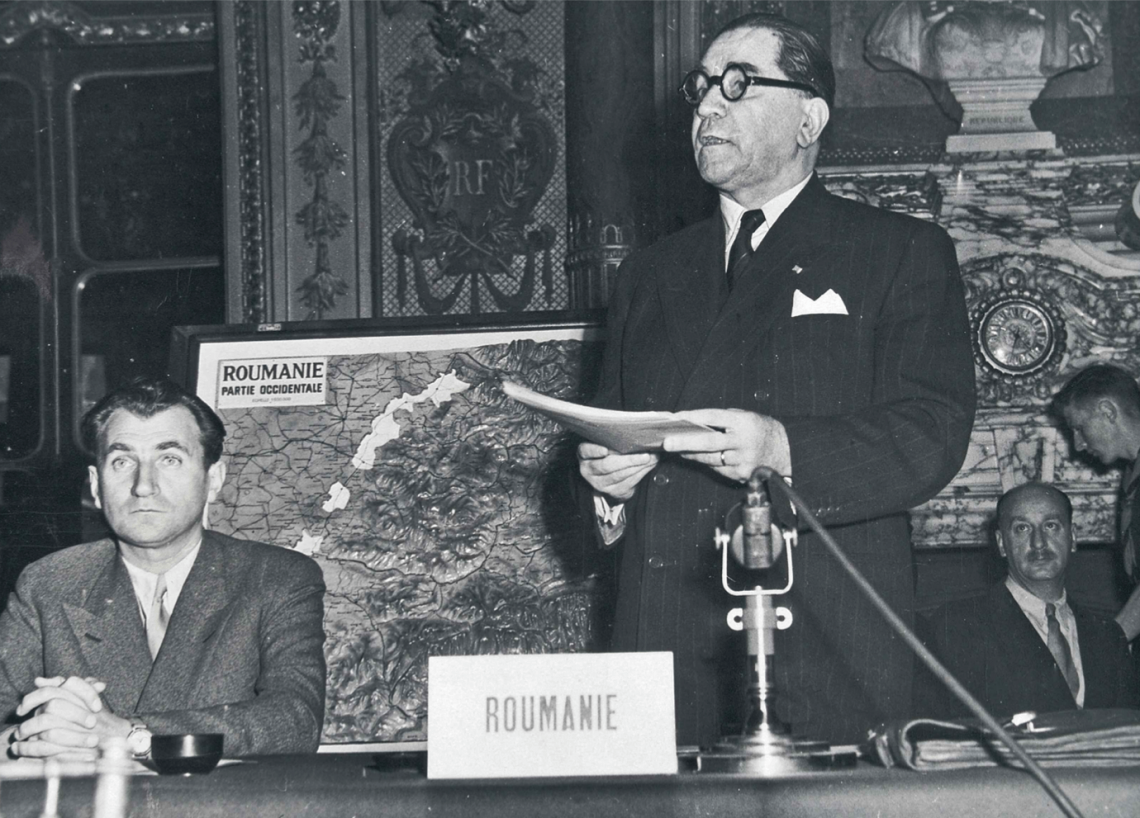
On April 2, 1944, the Red Army reached Bessarabia and Northern Bukovina and began re-establishing the entire border line of the former 1940 “Soviet-Romanian Treaty.” The 1940 borders were also recognized by the British and American allies during negotiations over the preliminary terms of the armistice with Romania. By the end of summer 1944, the Soviet Union had seized control of both Bessarabia and Northern Bukovina. On April 12, the Soviet armistice terms as formulated by the three Allied powers were presented in Stockholm to Fred Nanu – the Romanian ambassador to Sweden – representing the Antonescu government and in Cairo to Prince Știrbey, representing the Romanian opposition. Antonescu elected to continue fighting rather than accept the terms of the armistice.
Although the Soviets demanded Romanian opposition to the Germans as a minimum condition for an armistice, they refrained from subjecting the country to military occupation and declared the Second Vienna Award to be “unjust.” The Soviet government was prepared to conduct joint military operations with Romania against the Germans and the Hungarians – in the original English-language version of the Soviet proposal – “with the object of restoring to Rumania all of Transylvania or the major part thereof.” At Winston Churchill’s express request, this condition was supplemented by the statement that the transfer of this territory would take place “subject to confirmation at the peace settlement.” The US State Department’s phrasing, however, was more noncommittal, “deferring the definitive disposition of this territory to the general peace settlement.”
The British and American governments preferred to postpone the question of Transylvania’s status until after the war. In both London and Washington at about the same time (and in Paris the following year), similar ideas were broached about the territory to be awarded to Hungary, the issue of population transfers related to the border changes, and Transylvanian autonomy. These ideas had already emerged in the summer of 1940 in the proposals of the Romanian geopolitician Sabin Manuilă and the Hungarian Teleki Institute during the lead-up to the Turnu Severin negotiations regarding the Romanian-Hungarian border prior to the Second Vienna Award. When considering the possibility of minor border changes in the American peace plans in 1944, the latter began from the fact that the Romanian government itself had already proposed such changes in 1940; thus, it seemed that Romania would be willing to accept a small-scale cession of territory, the so-called kis-partium solution.
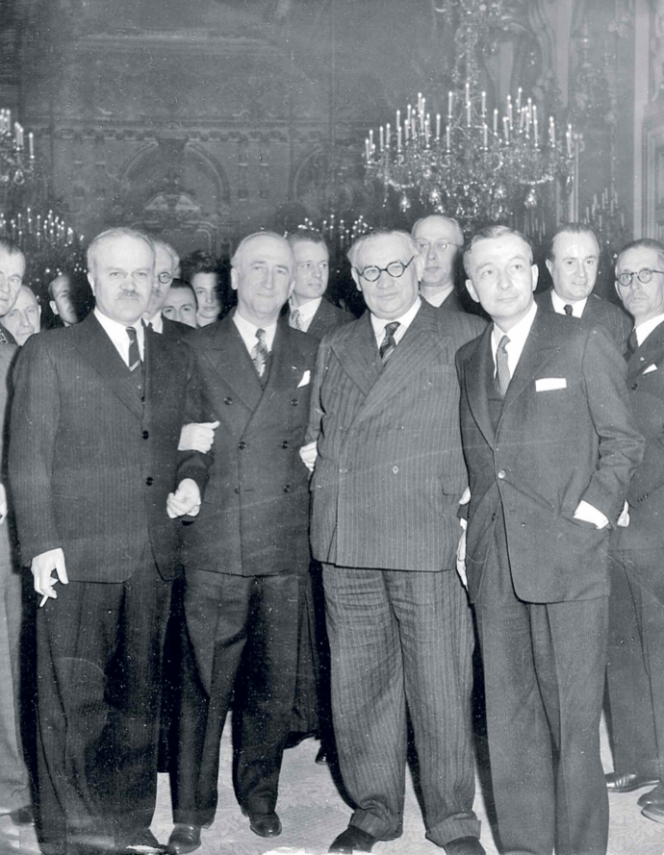
In Litvinov’s aforementioned note written to Stalin dated June 5, 1944, the Soviet deputy people’s commissar for foreign affairs summarized Moscow’s position on the Transylvanian question. As an initial point, he iterated that “the United Nations is free from any obligations regarding Transylvania since the Treaty of Trianon and all other formal obligations have become null and void as both Hungary and Romania are enemy states [fighting against the United Nations].” In resolving the territorial problem, Litvinov preferred national over historical criteria, making the determination of Transylvania’s ownership to one or another competitor dependent on the extent to which he could obtain long-term guarantees of lasting cooperation with the Soviet Union. As in the case of Hungary, he regarded Romania as an enemy state, one which “deserves punishment, not a reward. However,” as he reasoned, “awarding it Transylvania is entirely conceivable in exchange for a firm guarantee of close and long-term cooperation with the USSR and a complete renunciation of its claims to Bessarabia and Bukovina. Romania would consider Transylvania to be sufficient compensation for the loss of Bessarabia and Bukovina [….] Romania would [then] need the protection of the USSR against Hungary, which will never reconcile itself to the conclusive loss of all of Transylvania.”
Nevertheless, from the Soviet perspective, Litvinov considered the creation of an independent Transylvanian state to be the most advantageous. Transylvania would then be a point of conflict, an Apple of Discord between Hungary and Romania, whose continued existence would depend on the protection of the Soviet Union. In any case, the deputy people’s commissar for foreign affairs suggested a “temporary” ruling to be made on Transylvania’s independence until the prospects for cooperation with Romania or Hungary were clarified.
On August 23, King Michael of Romania carried out a coup, arresting Marshal Antonescu based on the terms of the April armistice. The main impetus behind the transition was the “acquisition” of Northern Transylvania. In his proclamation, the king announced that “the [United] Nations have guaranteed our country’s independence and non-interference in our internal affairs” and that “alongside the Allied armies and with their help, mobilizing all the forces of the nation, we will cross the borders imposed by the unjust Vienna diktat to liberate our Transylvanian land from foreign occupation.”

The Belgian beauty queen of the Paris peace conference: while debating the fate of various peoples and the punishment to be meted out to lesser vanquished states, the delegates of the 21 victorious states drank champagne, held balls, enjoyed opera nights, and even chose a beauty queen.
Addressing the Soviet leaders, Romanian nationalist peasant politician Iuliu Maniu expressed his gratitude for the “benevolent” Soviet military assistance promised for the “liberation” of Transylvania. Moscow adhered to its April 1944 armistice terms but reserved the right to review the decision on Transylvania during the final peace settlement. According to the English-language text of the Soviet draft agreement of August 31, 1944, “the Allied Governments … agree that Transylvania (whole or greater part) should be returned to Roumania subject to reconsideration at peace settlement.”
On September 4, 1944, the British foreign secretary, Anthony Eden, presented the Hungarian armistice conditions to the war cabinet, based on the Anglo-American draft of the Bulgarian armistice adopted by the European Advisory Commission. Eden saw the Soviet Union as firmly committed to giving “Transylvania or the greater part thereof” to Romania, but due to the large Hungarian minority, the British believed that “some modification of the Trianon border seemed desirable.” The British foreign secretary had previously proposed “as a temporary solution the restoration of the Trianon border that existed before the Second Vienna Award imposed by Hitler in August 1940,” although he acknowledged that “a final resolution can only be achieved with a final peace.”
The English-language text was added to Article 19 of the armistice agreement: The Allied governments declared the [Second] Vienna Award null and void and further agreed that “Transylvania (or the greater part thereof) should be returned to Roumania, subject to confirmation at the peace settlement.” Romanian publications routinely mistranslate the text of the armistice conditions, mentioning “Transylvania (or the greater part thereof)” while omitting the proviso “subject to confirmation at the peace settlement.” Upon conclusion of the armistice agreement signed on September 12, 1944, the Soviet government found the means with which to force both the Romanians and the Hungarians under its heel.
Churchill and Eden had already begun negotiations in Moscow with Stalin and Molotov, which would lead to the so-called “Percentages Agreement,” when the Hungarian delegation signed the preliminary armistice conditions on behalf of the regent, Admiral Horthy, on October 11, 1944, which stated, “Hungary is obliged to evacuate all Czechoslovak, Yugoslav and Romanian territories which it has acquired and has held since December 31, 1937, and is obliged to withdraw all Hungarian troops and civil servants.”
In order to facilitate Hungary’s exit attempt from the Axis camp, the advance of Soviet troops towards Budapest was halted on October 12, and the Romanian authorities were barred from entering Kolozsvár (Cluj-Napoca). A few days later, the Romanian gendarmerie was also ordered to leave Kolozsvár. This may have been the result of General Gábor Faragho’s Moscow manifesto of October 14, 1944, in which the Hungarian general protested against the atrocities committed by the Maniu Guard, a Romanian paramilitary organization. Molotov, along with the British and American ambassadors, immediately commenced armistice negotiations concerning Hungary that were based on the preliminary Soviet draft and contained no provisions regarding Hungary’s borders apart from the clause obligating the withdrawal of “all Hungarian troops and civil servants.” The US secretary of state, Cordell Hull, for his part, repeated the American position on the Transylvania issue, as already expressed during the Romanian negotiations, to wit: “territorial settlements should not be embodied in the armistice document and that no final decisions on territorial disputes should be taken during the course of the war.”
With the failure of Hungary’s attempted exit from the war, Stalin – in the fall of 1944 – took the position that Hungary would return to its “old,” that is, Trianon, borders. However, this did not mean that he automatically handed over the disputed lands to the Romanians; instead, they were placed under Soviet military administration on November 12, 1944. In his memorandum to President Roosevelt written on January 24, 1945, King Michael argued for the restoration of Romanian administration, because otherwise Northern Transylvania, or the greater part thereof, would “remain under foreign or military occupation for a prolonged period of time. However, if the entire territory is placed under Romanian administration in accordance with Article 19 of the armistice, the situation is quite different since according to the peace treaty only a small part of this territory can be transferred to another state. In this case, Romanian administration would have to be withdrawn from only a small part of Northern Transylvania.”
Possession of Northern Transylvania proved to be the “carrot” with which the Soviet Union could induce fundamental changes within the Romanian political system. Stalin gradually realized that possession of the territory could be a useful tool in dealing with the Romanian monarchy and various historical parties in helping the communists come to power. In early March 1945, Stalin sent his deputy people’s commissar for foreign affairs, Andrei Vyshinsky, to Bucharest, who used a combination of military and political threats to persuade King Michael to remove the Nicolae Rădescu government and appoint Petru Groza – Soviet- and Hungarian-friendly − as prime minister. Vyshinsky stated that if the king were to reject Groza’s appointment, he – Vyshinsky – “could not be responsible for the continuance of Rumania as an independent state.”
King Michael agreed to appoint Groza as prime minister when he was informed of Soviet intentions to allow the Romanian administration to return to Northern Transylvania. In Kolozsvár, on March 13, 1945, Vyshinsky presented Stalin’s “gift” – Northern Transylvania – to the Romanian government he had helped bring to power. The historical parties of Romanian politics were forcibly ousted from positions of power and deprived of the glory of taking part in the realization of the national goal that united all Romanians – the “return” of the “severed” Transylvanian territories. The disputed territory gifted by the Soviets to Groza’s left-wing Romanian government formed the basis of a new combination of forces that had previously not been regarded as nationalist in outlook. In terms of Hungarian and Romanian relations, this all meant that the Soviet position on the border issue had resolved itself in the formula of “all of Transylvania” to Romania and the restoration of the Trianon border.
Belated repentance for Trianon
The imposition of a left-wing government on Romania – through unilateral Soviet action – triggered a confrontation between the Allied powers that threatened to upset the entire European peace settlement. At the Potsdam Conference following the war, the heads of state and governments of the Soviet Union, the United States, and Great Britain established the Council of Foreign Ministers, which had the task of preparing the peace treaties and resolving European territorial issues. On August 19, 1945, King Michael called on Groza to resign, as his government did not represent all democratic parties and thus could not acquire the diplomatic recognition required for the peace process. Groza refused. In September, Groza and Deputy Prime Minister Gheorghe Tătărescu received confirmation from Stalin himself during their visit to Moscow that the Soviet Union would restore the pre-war Hungarian-Romanian border.
The above wording is how Litvinov expressed it in his preparatory note to the peace agreement, thus avoiding “even the appearance of mentioning the Treaty of Trianon and thereby recognizing it.” This was amended to “the Hungarian-Romanian border as of December 31, 1937” in the Soviet peace proposal submitted to the Council of Foreign Ministers. Although the Soviet government had committed itself to transferring Northern Transylvania to Romania, it could not ignore the fact that this would require diplomatic recognition and Anglo-American consent – not unless it wished to conclude a separate peace with Romania, which it did not seriously consider.
The Soviet delegation presented its draft Romanian peace treaty at the first session of the Council of Foreign Ministers in London on September 12, 1945, in which it argued for the transfer of “the whole of Transylvania” to Romania on the basis that Romania had supported the Allied cause in the war against Germany. The British delegation, however, stated in its draft response that the issue could not be decided solely on the basis of Romania’s wartime performance, that it was very important that the Romanian-Hungarian border needed “to be just on its own merits,” and that the issue needed to be examined by an expert subcommittee before making any final decision. The Americans submitted their own border adjustment proposal, which was drawn on a highly detailed Romanian military map, with the stipulation that Transylvania’s awarding – in whole or in part – to Romania be determined after an examination of the competing national claims. The American proposal, which included a border adjustment of 3,000 square miles (about 7,000 km²) in Hungary’s favor compared to the Trianon-era border, was based on the Romanian Sabin Manuilă’s proposal for the Turnu Severin negotiations in August 1940. In an internal document, the French delegation – as a belated repentance of Trianon – stated, when reflecting on the Soviet draft, that “it would be regrettable if the Transylvanian question were to be resolved in such a radical fashion that the rights of the significant Hungarian minority were not taken into account at all […] A return to the 1920 borders of Transylvania would not contribute to an improvement of the extremely tense Romanian-Hungarian relations. […] A solution respecting the interests of the populations concerned and both countries may only be found if Transylvania were divided unequally, with the Transylvanian plateau proper being awarded to Romania and the narrow strip of the Great Plain to the west to Hungary. This border has been sketched by our Ministry of Foreign Affairs. […] Such a solution would reflect a sense of fairness towards the significant Hungarian minority.”
The Council of Foreign Ministers’ debate on Transylvania
On September 20, 1945, the Council of Foreign Ministers met to discuss the draft peace treaty submitted by the Soviet Union. The US secretary of state, James Byrnes, made diplomatic recognition of the Romanian government and the start of peace negotiations contingent on Groza’s resignation and a reshuffling of his government. The British foreign secretary Ernest Bevin reluctantly followed the American line. Molotov – in accordance with Stalin’s instruction – wanted to strengthen the internal standing of the Groza government by restoring the Trianon-era Hungarian-Romanian border. The Soviet people’s commissar for foreign affairs regarded the annulment of the [Second] Vienna Award to be his main task and believed the issue of “returning” the “whole of Northern Transylvania” to Romania to be so unequivocal that it could be accepted without any further discussion.
Referring to the text of the armistice agreement, Bevin remarked that he only wanted to establish “a just and equitable frontier” in order to avoid future conflicts. The French foreign minister, George Bidault, proposed an ethnic boundary that would leave as few Hungarians as possible in Romania and as few Romanians as possible in Hungary. However, since the territorial distribution of the Hungarian population was centered in Székely Land, in the middle of an area inhabited by Romanians, the above only allowed for a partial solution, and recourse would have to be made to strengthen and improve minority rights.
Molotov made it appear that the Soviet Union merely wanted to concur – retroactively – with the decision made by the Americans, British, and French after the First World War – a decision that was later questioned only by Hitler. The Soviet government demanded that Hitler’s award be rescinded. Molotov argued that Article 19 had been carefully worded not to bind things in case new circumstances arose. But no such circumstances had arisen, the Soviet foreign minister stated, referring unambiguously to Horthy’s unsuccessful attempt to break away from the Axis camp and Hungary’s failure to embark upon a change in government.
Bidault shared Molotov’s opinion that the [Second] Vienna Award should be rescinded and that whatever was reasonable in the 1919-1920 treaties should be reinforced. Byrnes, on the other hand, pointed out that in 1919 the United States had tried for several months to secure a different line for the Hungarian-Romanian border than the one that was ultimately adopted. This occurred during the final stages of the peace process, when the Americans had only an observer present at the peace conference, and hence its decisions were not binding on the United States.
When the debate concluded, the Americans submitted a proposal that would have seen 3,000 square miles of Hungarian-majority territory ceded to Hungary along with an attached map disclosing the adjustment. Molotov seemed open to discussing this at the next session. On September 21, the foreign ministers agreed that “the frontier with Hungary shall be, in general, the frontier existing in 1938; however, as regards Transylvania, the entire situation shall be examined with a view to determining whether the award of a small part to Hungary would materially reduce the number of persons to be subject to alien rule.”
The September 20, 1945 debate on Transylvania in the Council of Foreign Ministers was the only substantial discussion among the decision-makers that saw them contrast their respective peace plans and arguments against one another, making it clear that “the fate of the region had not been decided in advance, [that] everyone was aware of the complexity of the issue, and [that] the solution reached in 1920 was neither the only possible nor even the best solution.”
(translated by John Puckett and Andrea Thürmer)
